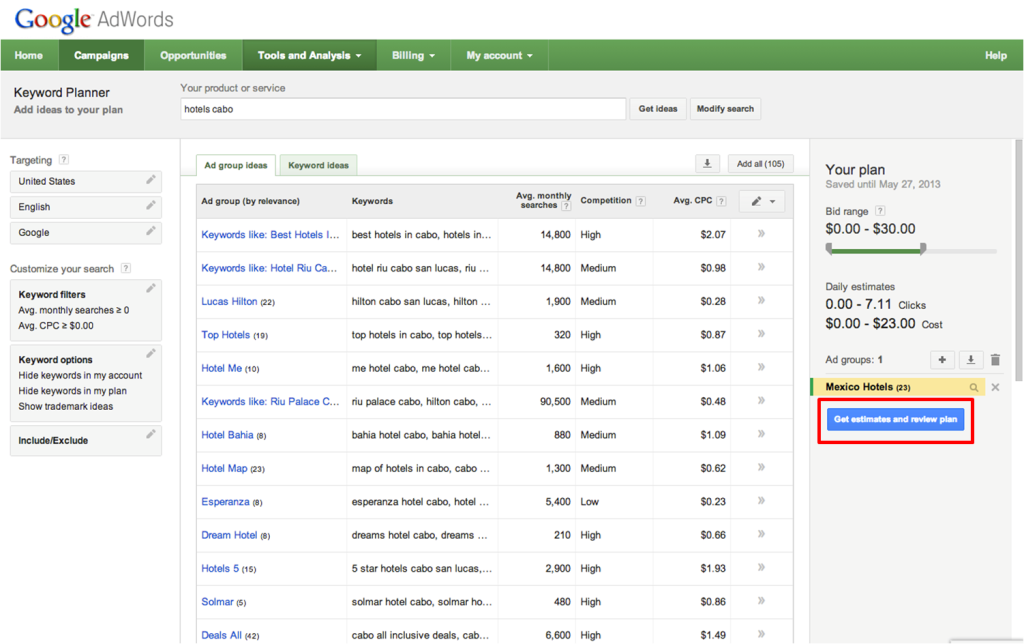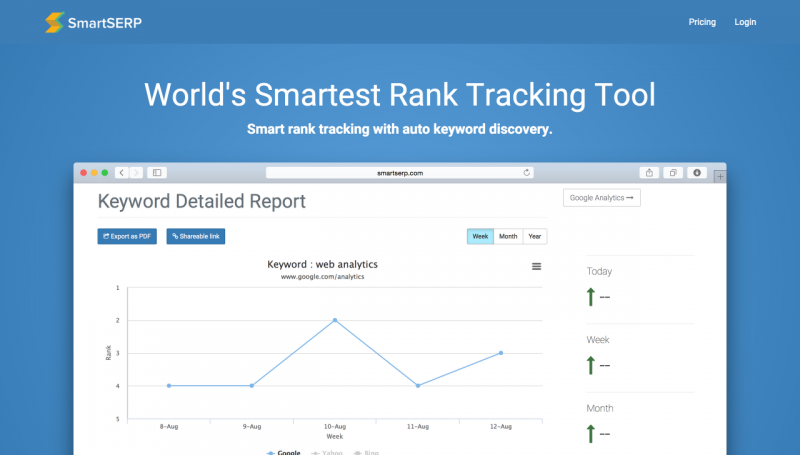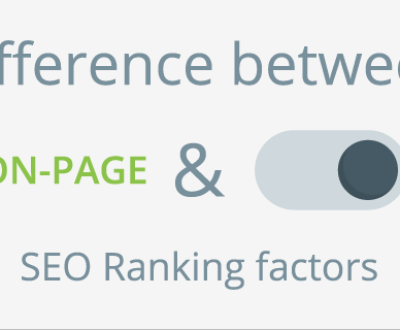
Defining your target audience is not a simple task. It is not just about knowing the age, gender and location of your potential users. It is about knowing what they like, what they dislike and what are the problems they face and the what are the answers they are searching for. Once we are able to empathize with our users, then we can go ahead and jump into doing keyword research and creating a customized SEO strategy with their needs in mind.
Go to industry research studies and look at the latest statistics of users in your domain. Research on social media platforms and find who is searching for the most common keywords in your industry. Make personas of different types of users, their age, their needs and the social channels they are active on. Try to get data from trusted sources online to find who the biggest chunk of users are. Do an offline study and start an online survey among your family/friends. At the end of the day, you are catering to an individual and all your preparations must be done in such a manner that you understand your user as an individual and not as part of a target audience.
What is your keyword shortlisting strategy?
The success of your website depends on whether are able to rank for the right keywords and bring the right traffic to your website. And finally see them convert to become your satisfied customers. But, the point here is that knowing which keywords to target and which ones to ignore will make a huge difference to the success of your Search Engine Optimization strategy.

With keyword research, you can bring the right audience to your website that have high chances of becoming your customers. This can be done by knowing which keywords to rank for and then going ahead and ranking well for those keywords. Keyword research is an opportunity to cash in on changing market conditions, customer demand and knowing exactly what the market needs.
The basic strategy that is followed across the board is first creating a seed list of starting terms, then expanding your list using keyword research tools and finally refining your list with competitive research. Lets go through each step in detail:
Step 1: The seed list
The first step is creating a list of keyword ideas so that you don’t miss out on any important keywords. Basically, what you are doing here is setting your boundaries. Once you have brainstormed and come up with all the keywords you could think of, try to put them into different groups like brand keywords, product keywords, question keywords, etc.
Step 2: Know your audience
When you know your audience, you will know how they think and thereby the way the go about searching for the services they need online. Ask a few of your loyal customers. Put yourself in your customer’s shoes and think about how you would search and what words you would use. Start making notes of all the keywords that come to your mind. Take the help of the Google Keywords tool, online forums, comments section and your analytics. Also, look at keywords that users are using to reach your competitor’s website.
Step 3: Start making your keyword list
Once you are done with the research, you can use keyword tracking tools like Google Adwords, SmartSERP keyword tool to go ahead input your keywords. Start off by grouping your keywords by topic. Always use exact match for getting accurate estimates of search traffic. Adjust your filters as you like and then proceed to finalize the keywords you think are interesting. Finally, download the complete list of keyword ideas.
Step 4: Refine. Refine. Refine
Once you are ready with a decent lot of keywords, it is time to bring it down to the most effective keywords. When you are optimizing your website, you can only do it for a limited number of keywords. Choose the best keywords in each group. Drop audience terms and product keywords that are too generic or confusing. Stick only to the best of the best keywords.
Next, try to see what is the keyword competition for each keyword. After that check to see if your keyword is only relevant in your domain or is getting confused with another product/service from another domain. Next group them according to the semantics of it. And finally look at their monthly search traffic before deciding on which keywords you would like to select.
Tools that can help you find better keywords
Google Keyword Planner
 The Google Adwords keyword ranking tool is the most popular and accurate tool out there to assisst your decision making process while choosing your keywords. It gives you the exact number of monthly searches for millions of keywords. You also have the advantage of seeing search volumes for specific languages and countries.
The Google Adwords keyword ranking tool is the most popular and accurate tool out there to assisst your decision making process while choosing your keywords. It gives you the exact number of monthly searches for millions of keywords. You also have the advantage of seeing search volumes for specific languages and countries.
Google Search Console
Google Webmaster Tools allows you to see phrases that people are searching for which is showing your website as a search result. It means that whenever people search for these terms, your website link shows up but not necessarily clicked on. This tool is useful to identify how you can improve your SEO so that you can rank higher for that particular keyword and also ensure that you get a click through to the website.
SmartSERP Keyword Tracker
This is an interesting tool that finds out all the keywords that you are ranking for, without your knowing it. You can then go ahead and start incorporating the keywords into your strategy and ensure that you can rank better for these keywords. Also if tells you which keywords your competitors are ranking for. So you can be aggressive and start targeting those keywords as well. Also, it keeps you updated on your keyword ranking changes on a daily basis so that you can see if your strategy is effective or not. Start your trail account for Rank Tracking with Smartserp.com
Google Trends & Hot Trends

If you want to find out what people are searching for currently, then visit https://www.google.com/trends/hottrends. It is the best place to get ideas to create content and also predict future search terms/frequencies. Also nearly 20% of searches on Google everyday are that which have never been searched in history before. A lot of keywords can become very popular which have been searched for the first time just few days ago, so be alert.
Alexa Search Stats

Alexa is often known to shown how popular a website is compared to others across the world. But it also has this feature where you can get some interesting insights about your competitors. All you have to do it is that, enter the URL of your competitor and you will get the search phrases that were used to find that website. Very interesting resource. It is useful to keep a close tab on your competitors and try to rank for their keywords as well.
Google Suggest

Before you finish a search query on Google search, you get numerous suggestions to complete your search. A lot of search queries in recent times are questions and in that case, nearly 70% of users prefer to use one of the suggested queries instead of typing out on their own. Also at the bottom of the SERPs you find ‘realted searches’. You can use both these resources to get a good idea of what people are searching for as they are the most common search terms.
Website Analytics
Data has a lot of the answers we are looking for. Your website analytics can give a lot of insights into search terms that are being used to reach your website. The nationalities of your users and the time they spend on each page. It gives you a good review on the performance of your website content as well. Google Analytics is a good resource to go through the different data collected for your website and analyze it for better SEO.
Conclusion:
Do not forget to go through the process every few months and if you like, try to have a keyword plan for each webpage. And don’t forget to stay on top of the latest trends by adding new keywords to your existing list and trying to rank for them. Once you are able to rank for the easier keywords, it becomes easier for you to compete for the more competitive keywords and actually be successful at ranking for it. Wishing you all the best in targeting the right keywords and ranking for it.
If you would like to suggest any other keyword tools that we have missed, please comment below.











